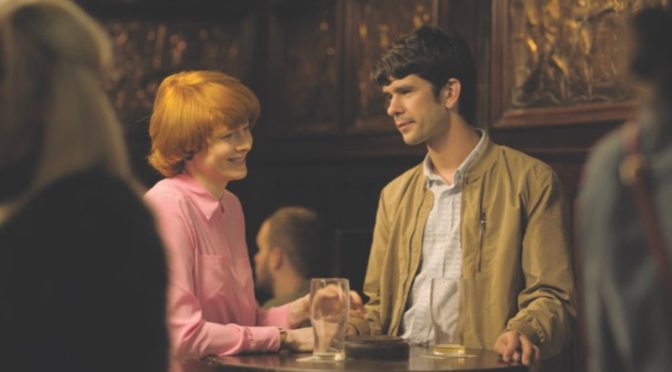 LITTLE JOE is a film about growing distant from other people and the film’s own tone of cold detachment makes it difficult to engage with initially. But, like the plant of the title infects those around it, LITTLE JOE gradually infects you with its languid cinematography, a terrifically subtle central performance, and a wonderfully puzzling sense of ambiguity.
LITTLE JOE is a film about growing distant from other people and the film’s own tone of cold detachment makes it difficult to engage with initially. But, like the plant of the title infects those around it, LITTLE JOE gradually infects you with its languid cinematography, a terrifically subtle central performance, and a wonderfully puzzling sense of ambiguity.
Alice (Emily Beecham) is a corporate plant breeder working on a new strain of plant with a scent designed to stimulate oxytocin in the human brain and therefore produce happiness. As the plant—nicknamed ‘Little Joe’—continues to grow, the behaviour of the people around Alice, including her research partner, Chris (Ben Whishaw), and her teenage son, Joe (Kit Connor), starts to change. Alice grows suspicious of her creation and increasingly distant from the people in her life who are seemingly ‘infected’ by Little Joe’s mind-altering pollen.
LITTLE JOE is director Jessica Hausner’s first film in English and her first to flirt with the category of ‘genre film’. While LITTLE JOE evokes the trappings of genre film with specific references to films like INVASION OF THE BODY SNATCHERS and LITTLE SHOP OF HORRORS, Hausner maintains a detachment from genre film through her narrative’s ambiguity and a strong focus on the character of Alice and her detachment from the people around her. Sci-fi elements are used to emphasise the alienness of Little Joe—and plants in general—from the very start as the film opens with a long shot over the young plants and a slow score both of which evoke the opening of ALIEN.
In a post-film Q&A at the London Film Festival, Hausner referred to her aim to make a “female Frankenstein” and appropriately it’s her Dr. Frankenstein in the shape of Emily Beecham’s Alice who carries the film. Beecham won the award for Best Actress at the Cannes Film Festival for her performance in LITTLE JOE and her subtle and understated performance is deserving of accolades. Beecham plays Alice with an ambiguity and detachment that gradually infects the whole film. Yet, as the people around her grow more and more inhuman—with dialogue and performances that could come straight out of a Peter Strickland or Yorgos Lanthimos film—Alice is portrayed as becoming more open and more human by the film’s end.
The “female” of “female Frankenstein” is also significant. It’s integral to the film’s message about gender politics that it’s women who become concerned about the effect of the plant (Alice and her co-worker, Bella (Kerry Fox), who is misogynistically dismissed as mentally ill) and it’s men (her boss, Karl (David Wilmot), and her research partner, Chris) who don’t believe them, dismiss them, and assault them. Even when women give birth to monsters, men embrace the monsters rather than listen to women.
Even when the film’s narrative and its cold tone leaves the audience detached, the striking colour palette and Martin Gschlacht’s cinematography is engaging. Over the course of the film, the bright red of Little Joe creeps over the colour palette like H. G. Wells’ Red Weed. Gschlacht’s camera moves in long, languid shots that, at times, zoom and pan in ways that push humans out of the frame.
As beautiful as these shots are, this removal of the human from the frame is emblematic of the film’s detachment from the human during its first half. Ambiguity is important to the film and Hausner says she deliberately tried to keep the audience from being able to fill in the blanks. But those blanks at the film’s start make it difficult to feel emotionally engaged. The film does slowly infect you but by the time you’re fully drawn in, it’s almost over.

